Cooking and baking are not just about the ingredients and recipes, but also about the tools you use. Having the right utensils in your kitchen can make a huge difference in the success of your culinary creations. When it comes to measuring ingredients, spoons, and cups are essential tools that you will use frequently. In this blog article, we will discuss the necessary types of spoons and measuring cups you must have in your kitchen.
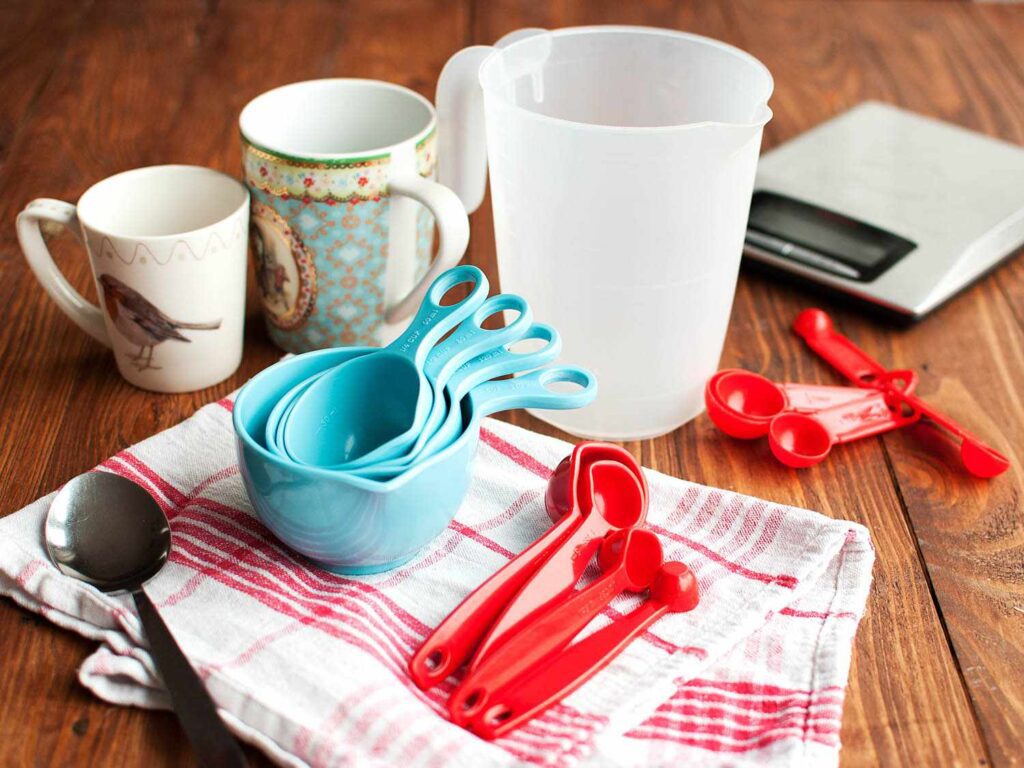

Table of Contents
A Spoonful of Different Types of Spoons
One tool that is often overlooked is the cooking spoon. However, there are actually many different types of spoons that serve a variety of purposes in the kitchen. Here are 22 different types that your kitchen needs.
1. Teaspoon
A teaspoon is a small spoon that measures about 5 ml or 1/6 of an ounce. It is used for measuring small amounts of ingredients such as spices, extracts, and baking powder. It is also used as a serving spoon for tea and coffee.
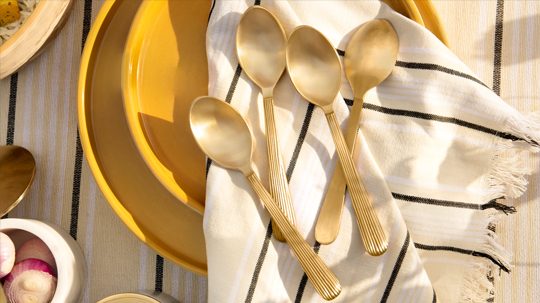

2. Tablespoon
A tablespoon is a larger spoon that measures about 15 ml or 1/2 an ounce. It is used for measuring larger amounts of ingredients such as sugar, flour, and oil. It is also used as a serving spoon for soups and stews.
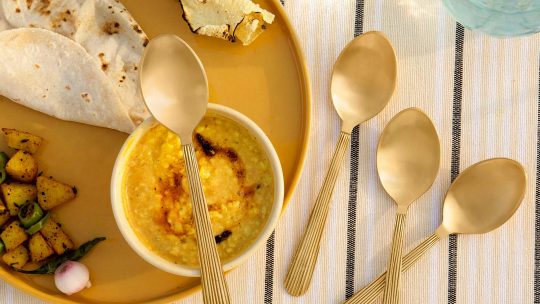

3. Dessert
A dessert spoon is a medium-sized spoon that measures about 10 ml or 1/3 of an ounce. It is used for serving desserts or for measuring ingredients such as honey and syrup.
A dessert spoon is a medium-sized spoon that’s used for serving desserts or for measuring ingredients such as honey and syrup. When it comes to baking, honey and syrup are used as sweeteners and are essential in many recipes.
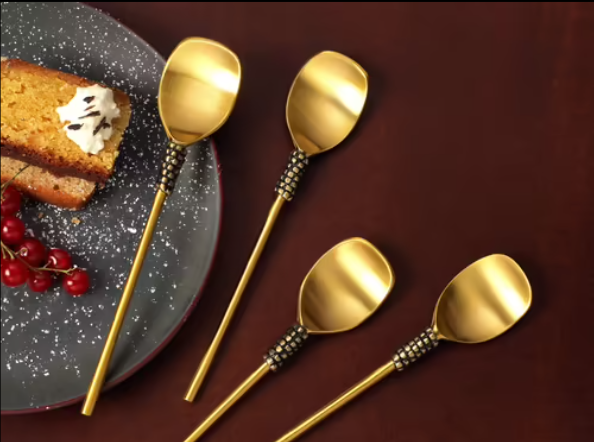

4. Soup
A soup spoon is a large spoon that measures about 20 ml or 2/3 of an ounce. It is used for serving soups and stews.
A soup spoon is a large spoon that’s used for serving soups and stews. When serving soups and stews, it’s important to use a soup spoon to avoid spilling and to make sure that everyone gets an equal amount of liquid and solids.
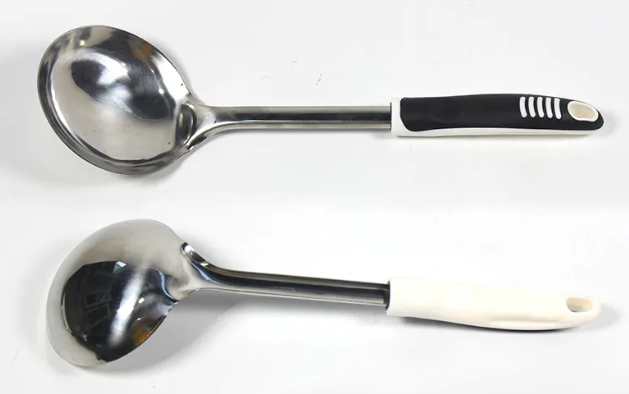

5. Measuring
Measuring spoons are utensils used to measure small amounts of ingredients, typically for cooking or baking. They come in a set of various sizes, such as 1/4, 1/2, and 1 tablespoon. Measuring spoons are usually made of metal or plastic and have a narrow, elongated shape with a handle on one end and a bowl or scoop on the other end.
Measuring spoons are an essential tool in the kitchen to ensure consistent and precise results when cooking or baking.
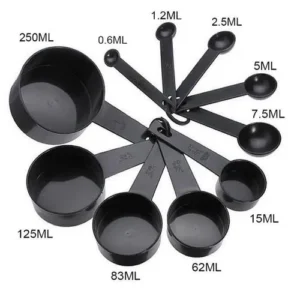

6. Wooden
A wooden spoon is a kitchen utensil that is typically used for stirring and mixing ingredients while cooking. It is made of wood and is resistant to heat and does not scratch the surface of pots and pans. It is a versatile utensil and can be used for various cooking tasks such as stirring sauces, soups, stews, and gravies.
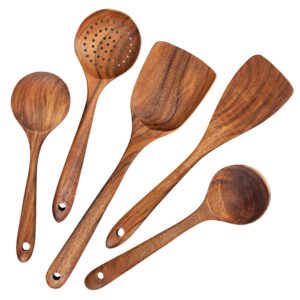

7. Slotted
A slotted spoon is a kitchen utensil with slots or holes that allow liquids to drain through while keeping the solids in the spoon. It is ideal for retrieving solid foods from liquids like poached eggs, vegetables from boiling water, and fried foods from oil.
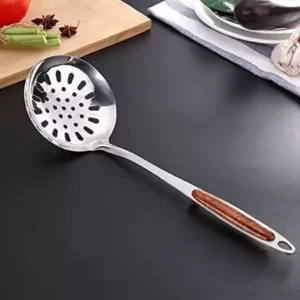

8. Ladle
A ladle is a long-handled kitchen utensil with a deep bowl used for serving soup, stew, or any other liquid dishes. It is designed to hold a large quantity of liquid and can be used to serve food into individual bowls or onto plates.
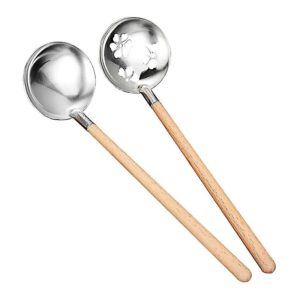

9. Skimmer
A skimmer is a flat, perforated spoon that is used to remove impurities from liquids. It is commonly used to remove foam from broths or to remove fried food from oil.
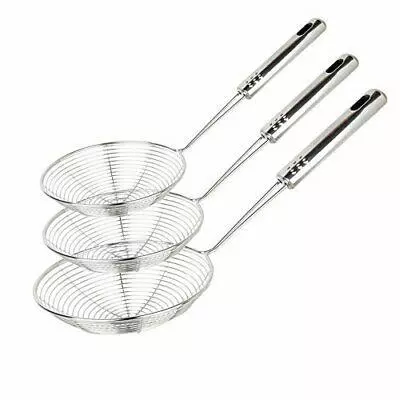

10. Spatula
A spatula is a kitchen utensil that is used for flipping, turning, and serving food. It is typically made of metal or silicone and is used for cooking tasks like flipping pancakes, turning steaks, and serving cakes or pies.
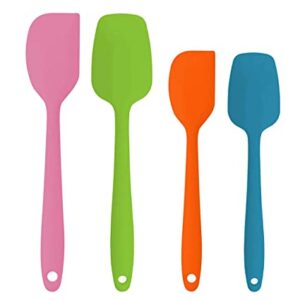

11. Solid Spoon
A solid spoon is a kitchen utensil that is typically used for stirring and serving food. It is made of metal or plastic and has a solid, rounded bowl that can hold solid or liquid foods.
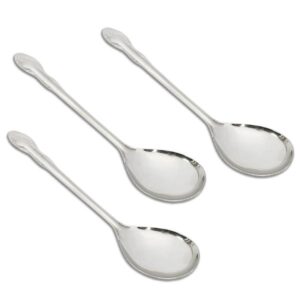

12. Pasta Fork
A pasta fork is a kitchen utensil designed specifically for serving pasta. It has long, pointed tines that can easily grip and lift strands of pasta, and it is often used to twirl spaghetti.
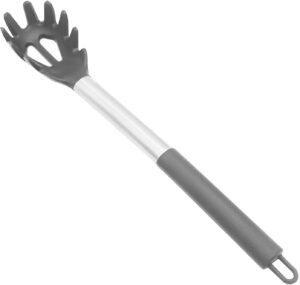

13. Meat Fork
A meat fork is a long-handled kitchen utensil with two or more tines used for holding and carving meat. It is designed to keep the meat steady while slicing, and can also be used to transfer meat from a cooking surface to a serving platter.
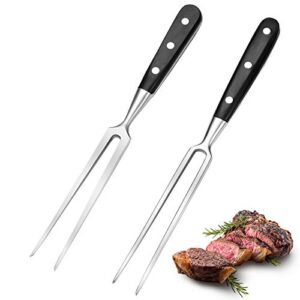

14. Fish Turner
A fish-turner is a kitchen utensil that is used to flip, turn, and serve fish. It has a thin, flat blade that is designed to slide under delicate fish fillets without breaking them.
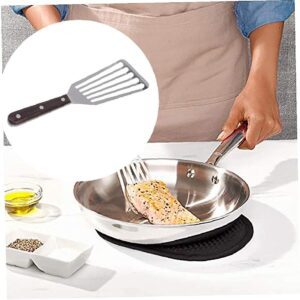

15. Sauce
A sauce spoon is a small spoon with a long handle that is used for serving sauces. It is designed to hold a small amount of sauce and can be used for precision pouring.
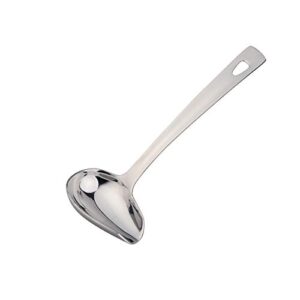

16. Tasting
A tasting spoon is a small spoon used for sampling food while cooking. It is typically made of metal and has a small bowl that can hold a small amount of food.
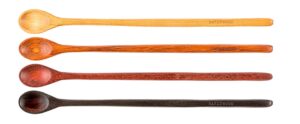

17. Mixing
A mixing spoon is a long-handled spoon used for mixing ingredients together. It is often made of wood or silicone and can be used for stirring batters, mixing sauces, and blending ingredients.


18. Spaghetti
A spaghetti spoon is a kitchen utensil designed specifically for serving spaghetti. It has a long, thin handle and a large, forked bowl that can easily grip and lift strands of spaghetti.
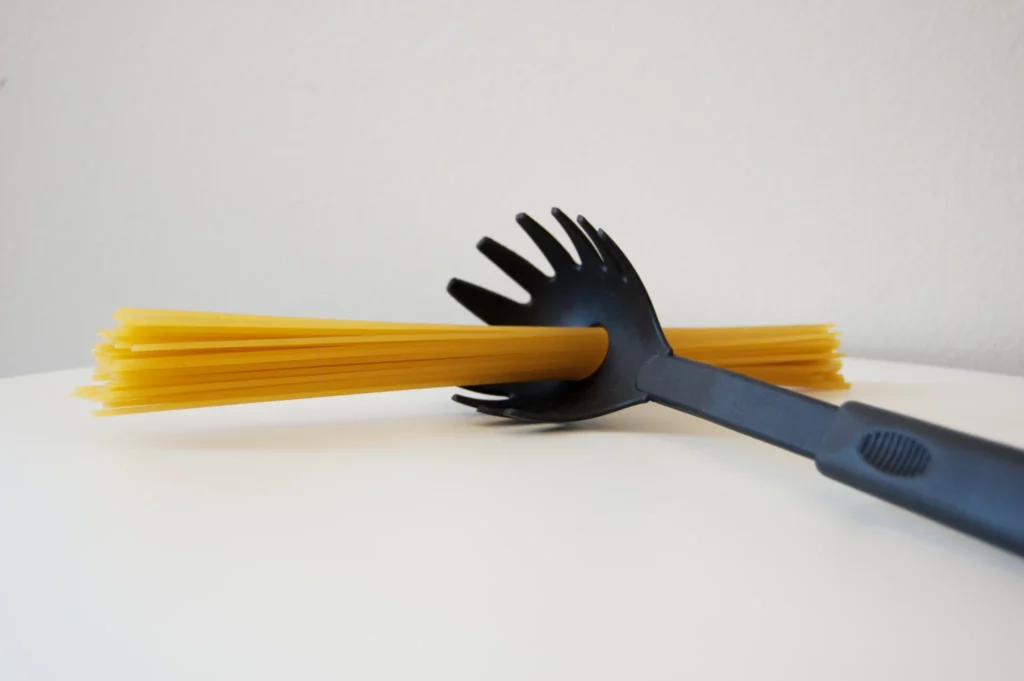

19. Rice Paddle
A rice paddle is a kitchen utensil used for serving rice. It is typically made of wood or plastic and has a flat surface that can be used to scoop the rice out of a pot or cooker.


20. Ice Cream Scoop
A spoon-like tool with a semi-spherical scoop that is used to serve ice cream. It comes in various sizes and can be made of plastic, metal, or other materials.
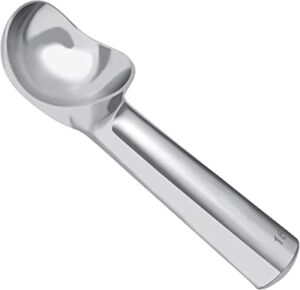

21. Egg Spoon
A small spoon with a short handle and a bowl designed to fit inside an eggshell to scoop out the egg yolk or white.


Simplify Your Measurements with These Measuring Cups
Measuring cups are kitchen tools used to accurately measure the volume of ingredients used in cooking and baking. Measuring cups typically come in sets of various sizes, such as 1/4 cup, 1/3 cup, 1/2 cup, and 1 cup.
Measuring cups can be made of various materials such as plastic, metal, or glass. They may also have markings in different units of measurement, such as cups, ounces, milliliters, or grams.
When using measuring cups, it is important to follow the recipe closely and measure ingredients accurately to ensure the desired outcome of the dish. Measuring cups should be leveled off with a flat edge, such as a spatula or knife, to ensure precise measurements.
Types of measuring cups
1 Cup Measuring Cup
A 1-cup measuring cup is the most commonly used measuring cup in the kitchen. It is used for measuring both liquid and dry ingredients such as milk, water, flour, and sugar. When measuring liquids, it’s important to use a measuring cup with a spout to prevent spills. When measuring dry ingredients such as flour and sugar, it’s important to use a measuring cup with a flat surface to ensure an accurate measurement.
1/2 Cup Measuring Cup
The 1/2 cup measuring cup is used for measuring ingredients such as oil, honey, and syrup. It’s important to have a 1/2 cup measuring cup in your kitchen because it’s not always easy to divide a 1-cup measurement in half.
1/3 Cup Measuring Cup
The 1/3 cup measuring cup is used for measuring ingredients such as brown sugar, chopped nuts, and breadcrumbs. It’s important to have a 1/3 cup measuring cup in your kitchen because it’s not always easy to divide a 1-cup measurement into thirds.
1/4 Cup Measuring Cup
The 1/4 cup measuring cup is used for measuring ingredients such as grated cheese, raisins, and oats. It’s important to have a 1/4 cup measuring cup in your kitchen because it’s not always easy to divide a 1-cup measurement into fourths.
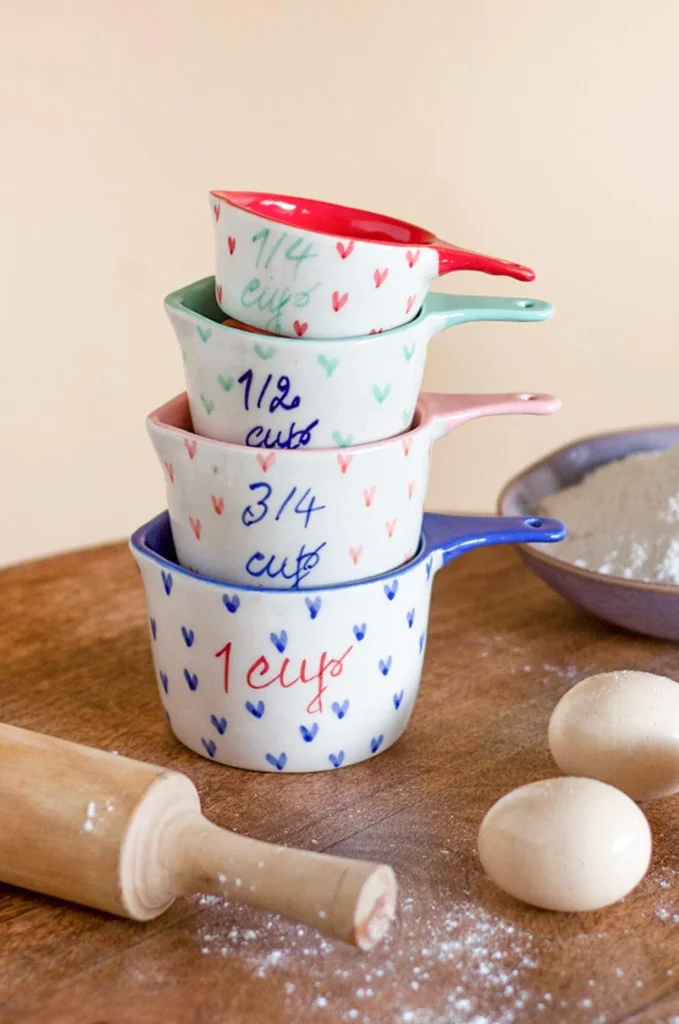



Why are measuring spoons and cups important?
Measuring spoons and cups are important in cooking and baking because they provide a standardized way to measure ingredients accurately. Cooking and baking are both scientific processes that require precise measurements to ensure that the recipe turns out the way it is intended to.
Using the correct amount of ingredients, especially those that are critical to the recipe’s success, such as baking powder or yeast, is essential to ensure that the finished product is of good quality. Using too little or too much of these ingredients can drastically affect the texture, flavor, and appearance of the final product.
Measuring spoons and cups helps to eliminate guesswork and ensure consistency in your cooking or baking. Without these tools, you would have to rely on estimates or eyeballing the number of ingredients, which can lead to inconsistent results.
Overall, measuring spoons and cups are crucial tools for anyone who wants to cook or bake with precision and achieve consistent, high-quality results.
FAQ’s
How important to have to measure spoons and cups in the kitchen?
Having measuring spoons and cups in the kitchen is very important because accurate measurements are crucial to the success of many recipes. Baking, for example, is a science and requires precise measurements in order to achieve the desired texture and taste.
How important is measuring in the kitchen?
Measuring is also important in cooking because it ensures that the proportions of ingredients are correct and the flavors are balanced. Too much or too little of one ingredient can significantly affect the taste and texture of a dish.
What are the important kinds of measurement in the kitchen?
The important kinds of measurement in the kitchen include volume (measured with measuring cups and spoons), weight (measured with a kitchen scale), and temperature (measured with a thermometer).
What are the 10 essential kitchen tools you need most and why?
The 10 essential kitchen tools that you need most are:
- Chef’s knife – for chopping and slicing
- Cutting board – to protect your countertops and keep your knife sharp
- Mixing bowls – for mixing ingredients together
- Measuring cups and spoons – for accurate measurements
- Kitchen scale – to measure ingredients by weight
- Whisk – for mixing ingredients together and incorporating air into batters and sauces
- Spatula – for stirring and flipping food in a pan
- Tongs – for gripping and turning food while cooking
- Sheet pan – for roasting vegetables and baking
- Dutch oven – for braising, stewing, and soups
How do you maintain measuring cups and spoons?
To maintain measuring cups and spoons, it’s important to hand wash them in warm soapy water and dry them thoroughly after each use. Never put them in the dishwasher as the harsh detergents and high heat can damage the markings and cause them to become inaccurate. Store them in a dry, easily accessible location so that you can easily find them when you need them.


[…] may also be curious to know about the Types of Measuring Spoons and Cups and Popular Kitchen Cabinet […]